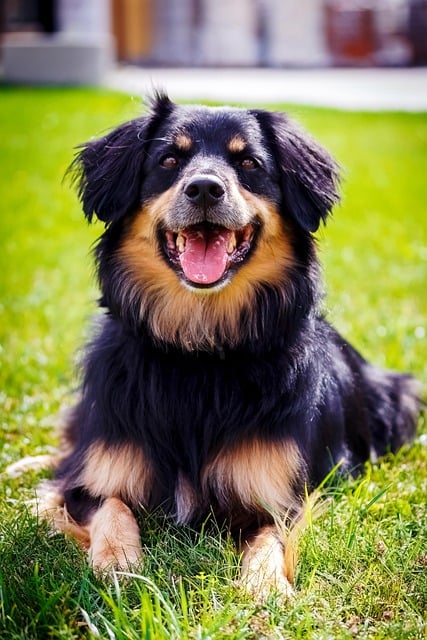


The Hovawart is a large, powerful, and versatile dog breed originally from Germany. Known for its protective nature and loyalty, the Hovawart excels as a working dog, guarding homes, properties, and families. It is also highly intelligent, making it a great companion and guardian, as well as a versatile working dog in various fields like search and rescue, and police work. With its affectionate yet independent nature, the Hovawart makes a wonderful family pet for those who can meet its exercise and training needs.
The Hovawart's origins can be traced back to medieval Germany, where it was used as a farm and guard dog. The breed’s name, "Hovawart," comes from the German words “Hof” (yard or farm) and “Wart” (guard or watch), reflecting its role as a guardian of property and livestock. It is believed to be a descendant of the German Shepherd, the Rottweiler, and other working dogs of the region. The Hovawart was valued for its intelligence, stamina, and ability to work independently. The breed was officially recognized in Germany in the early 20th century and has since been used for various types of work, including search and rescue, tracking, and guarding.
The Hovawart is a strong, well-muscled dog with a medium to large size. Males typically stand 24 to 28 inches (61 to 71 cm) at the shoulder, while females are slightly smaller at 23 to 27 inches (58 to 69 cm). The breed weighs between 65 to 90 pounds (29 to 41 kg). The Hovawart has a long, dense, and weather-resistant coat that can be black, blonde, or a combination of black and tan. The coat is moderately thick and slightly wavy, providing protection from the elements. The breed has a strong, slightly curved tail that is carried low or in a slight curve when relaxed. Its face is expressive, with dark, almond-shaped eyes and long ears that are slightly rounded at the tips.
The Hovawart is known for its balanced temperament, being both protective and affectionate. It is naturally loyal to its family and home, and it is instinctively protective, making it an excellent guard dog. However, despite its protective instincts, the Hovawart is typically friendly with its family members, including children, and can get along well with other pets if properly socialized. This breed is intelligent and independent, sometimes requiring a firm, confident owner who can provide consistent training. While they may be reserved or cautious around strangers, they are rarely aggressive without reason. Hovawarts are also known for being very alert and quick to respond to changes in their environment.
The Hovawart is an active and energetic breed that requires plenty of physical and mental stimulation. Due to its working dog background, it thrives on activities that engage both its body and mind. Daily exercise is essential, including walks, jogs, hikes, and playtime in a secure, spacious area. The Hovawart enjoys activities like agility, obedience training, and tracking, which tap into its intelligence and natural instincts. Without enough physical and mental activity, a Hovawart may become bored and could develop behavioral problems. It is important to provide a variety of activities to keep this breed satisfied and well-adjusted.
The Hovawart is highly intelligent and eager to please, which makes it generally responsive to training. However, it is also independent and may sometimes show stubbornness, so early socialization and consistent, positive reinforcement training are essential. The breed does best with a firm but gentle approach and can excel in obedience, agility, and other canine sports when properly motivated. Early exposure to different environments, people, and other animals is important to help the Hovawart grow into a well-rounded dog. Socialization should begin as a puppy to prevent the breed from becoming overly protective or reserved around strangers. With proper training, the Hovawart can be a well-mannered and well-behaved companion.
The Hovawart is generally a healthy breed, but like all dogs, it can be prone to certain health issues. Some of the more common health concerns for the Hovawart include hip dysplasia, elbow dysplasia, and progressive retinal atrophy (PRA). Regular veterinary check-ups, vaccinations, and preventative care are important to maintain the dog's health. Grooming needs for the Hovawart include regular brushing to maintain the coat and prevent tangling, particularly during shedding seasons. Bathing should be done as needed, but excessive bathing can strip the coat of its natural oils. Routine care should also include regular ear cleaning, dental hygiene, and nail trimming to keep the dog healthy and comfortable.
The average lifespan of a Hovawart is around 12 to 14 years. With proper care, including a healthy diet, regular exercise, and preventive veterinary care, this breed can live a long and fulfilling life. Monitoring for breed-specific health issues and staying proactive with health screenings will help ensure the dog remains in good health throughout its life. Many Hovawarts live well into their senior years with the proper care and attention to their needs.
© copyright Dog Compendium 2024 - 2025